What Is Tapestry? Tapestry, an ancient art form involving weaving colorful weft threads through plain warp threads, has captivated audiences for centuries. At WHAT.EDU.VN, we understand your curiosity and strive to provide clear, concise answers to all your questions about this fascinating art. Explore the world of woven wonders and discover the allure of this age-old textile art with us, delving into textile art, woven art, and fiber art.
1. Defining Tapestry: A Woven Art Form
Tapestry is a textile art form created by weaving colored weft threads through plain warp threads. The weft threads are woven back and forth across a specific segment of the warp to create a small block of color, building up blocks of color to create a pattern or picture. Tapestries are typically used as wall hangings, furniture coverings, or decorative pieces.
1.1 The Essence of Tapestry Weaving
Tapestry weaving is a unique form of textile art. It involves creating images or designs through the interlacing of weft and warp threads. This method contrasts sharply with other weaving techniques, where the primary focus is on producing a uniform fabric.
1.2 Key Characteristics of Tapestry
Several characteristics define tapestry.
- Weft-Faced Textile: The weft threads completely cover the warp threads, concealing them from view.
- Discontinuous Weft: The weft threads do not run continuously across the entire width of the warp.
- Design Complexity: Intricate designs and pictorial representations are common in tapestries.
2. The History of Tapestry: A Journey Through Time
The history of tapestry is long and rich, dating back to ancient civilizations. This art form has evolved across cultures and continents, leaving behind a legacy of beautiful and intricate woven masterpieces.
2.1 Ancient Origins
The earliest known tapestries date back to ancient Egypt and Peru. These tapestries were often used for burial shrouds and wall decorations.
2.2 Medieval Europe: The Golden Age
During the Middle Ages, tapestry weaving flourished in Europe, particularly in the regions of Flanders and France. Tapestries became a symbol of wealth and status, adorning the walls of castles and cathedrals.
2.3 The Renaissance and Beyond
The Renaissance saw a shift in tapestry design, with more emphasis on realism and perspective. Famous artists like Raphael created tapestry cartoons (designs) that were woven into stunning works of art.
3. Tapestry Materials: The Building Blocks of Woven Art
The materials used in tapestry weaving play a crucial role in the final product’s appearance, texture, and durability.
3.1 Wool: The Staple Fiber
Wool is the most commonly used fiber in tapestry weaving. It is readily available, easy to dye, and has excellent strength and flexibility.
3.2 Silk: Adding Sheen and Detail
Silk threads are often used in the weft to create intricate details and add depth to the design. Silk provides a lustrous sheen that enhances the visual appeal of the tapestry.
3.3 Other Materials
Other materials, such as cotton, linen, and metallic threads, may also be incorporated into tapestries to create unique effects.
4. Tapestry Techniques: The Art of Interlacing Threads
Tapestry weaving is a labor-intensive process that requires skill, patience, and a keen eye for detail.
4.1 The Loom: The Foundation of Tapestry
The loom is the basic tool used for tapestry weaving. It consists of two rollers that hold the warp threads taut. There are two main types of looms:
- Low-warp Looms: The rollers are on the same level, and the warp is stretched horizontally.
- High-warp Looms: The warp threads are stretched vertically between a top roller and a bottom roller.
4.2 Weaving Process
The weaving process involves passing the weft threads back and forth through the warp threads, creating blocks of color. The weaver uses a variety of techniques to create different textures and patterns.
4.3 Design and Cartoon
Tapestry weavers typically work from a design known as a cartoon. This is a full-scale painting or drawing that serves as a guide for the weaver.
5. Types of Tapestries: Exploring the Diverse World of Woven Art
Tapestries come in a wide variety of styles and designs, reflecting the diverse cultures and traditions in which they are created.
5.1 European Tapestries
European tapestries are known for their intricate details, historical and mythological scenes, and rich colors.
5.2 Asian Tapestries
Asian tapestries, such as those from China and Japan, often feature landscapes, floral motifs, and scenes from folklore.
5.3 Modern and Contemporary Tapestries
Modern and contemporary tapestry artists are pushing the boundaries of this art form, experimenting with new materials, techniques, and designs.
6. The Purpose of Tapestries: More Than Just Decoration
Throughout history, tapestries have served a variety of purposes, both practical and aesthetic.
6.1 Decoration and Status
Tapestries have long been used to decorate homes, palaces, and public spaces. They add color, texture, and visual interest to any room. In the past, tapestries were also a symbol of wealth and status, as they were expensive to produce and often commissioned by wealthy patrons.
6.2 Insulation and Warmth
In drafty medieval castles, tapestries served as insulation, helping to keep rooms warm and comfortable.
6.3 Storytelling and Education
Many tapestries depict historical events, mythological stories, or religious scenes. These tapestries served as a form of storytelling and education, conveying important information to viewers.
7. Famous Tapestries: Masterpieces of Woven Art
Throughout history, many tapestries have become famous for their artistic merit, historical significance, or cultural impact.
7.1 The Bayeux Tapestry
The Bayeux Tapestry is an embroidered cloth nearly 70 meters long, depicting the events leading up to the Norman conquest of England in 1066.
7.2 The Lady and the Unicorn Tapestries
The Lady and the Unicorn tapestries are a series of six tapestries created in the late 15th century, depicting allegorical scenes of courtly love and the five senses.
7.3 The Raphael Cartoons
The Raphael Cartoons are a series of tapestry designs created by the artist Raphael in the 16th century for Pope Leo X. These cartoons depict scenes from the lives of Saint Peter and Saint Paul.
8. Tapestry Today: A Continuing Tradition
Despite the rise of modern art forms, tapestry weaving continues to be practiced and appreciated around the world.
8.1 Contemporary Tapestry Artists
Contemporary tapestry artists are pushing the boundaries of this art form, creating innovative and thought-provoking works that reflect the issues and concerns of our time.
8.2 Tapestry in Interior Design
Tapestries are still used in interior design to add warmth, texture, and visual interest to homes and public spaces.
8.3 Learning Tapestry Weaving
Many people are interested in learning the art of tapestry weaving. There are numerous workshops, classes, and online resources available for beginners.
9. Caring for Tapestries: Preserving Woven Treasures
Tapestries are delicate works of art that require special care to preserve their beauty and integrity.
9.1 Cleaning
Tapestries should be cleaned regularly to remove dust and dirt. Professional cleaning is recommended for valuable or antique tapestries.
9.2 Storage
Tapestries should be stored in a cool, dry place away from direct sunlight. Rolling tapestries is preferable to folding them, as folding can create creases and damage the fibers.
9.3 Display
Tapestries should be displayed in a way that minimizes stress on the fibers. Hanging tapestries from a sturdy rod or frame is recommended.
10. Tapestry FAQs: Your Questions Answered
Here are some frequently asked questions about tapestries:
| Question | Answer |
|---|---|
| What is the difference between tapestry and embroidery? | Tapestry is a woven art form, while embroidery is a form of needlework where designs are stitched onto a fabric surface. |
| How long does it take to weave a tapestry? | The time it takes to weave a tapestry depends on its size, complexity, and the skill of the weaver. A small, simple tapestry may take a few weeks to complete, while a large, intricate tapestry can take months or even years. |
| How much do tapestries cost? | The cost of a tapestry depends on its size, materials, design, and age. Antique tapestries and those created by famous artists can be very valuable. |
| Where can I buy tapestries? | Tapestries can be purchased from art galleries, antique stores, online retailers, and directly from tapestry artists. |
| How can I identify an antique tapestry? | Identifying an antique tapestry requires expertise and knowledge of tapestry history, materials, and techniques. Consulting with a professional appraiser is recommended. |
| What are some of the most common tapestry designs? | Common tapestry designs include historical scenes, mythological stories, floral motifs, landscapes, and abstract patterns. |
| How are tapestries used in modern interior design? | Tapestries are used in modern interior design to add texture, color, and visual interest to walls. They can also be used as furniture coverings or decorative accents. |
| What are some of the benefits of owning a tapestry? | Owning a tapestry can add beauty, elegance, and historical significance to your home. Tapestries can also be a valuable investment. |
| How do I choose the right tapestry for my home? | When choosing a tapestry for your home, consider the size of the space, the style of your decor, and your personal preferences. |
| Are there any famous contemporary tapestry artists I should know about? | Yes, many talented contemporary tapestry artists are creating innovative and thought-provoking works. Researching contemporary tapestry art can help you discover artists whose work resonates with you. |
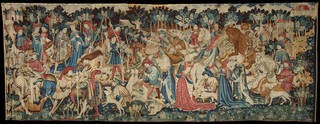
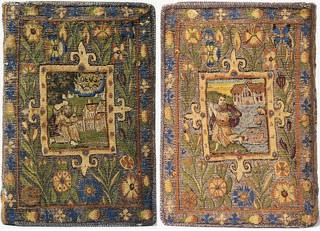
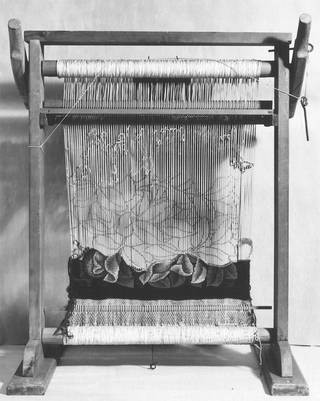
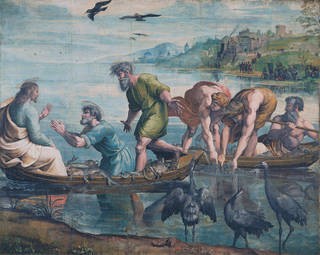
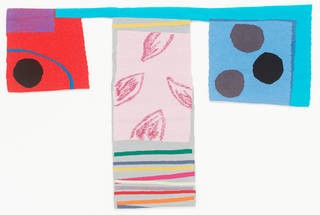
11. The Allure of Tapestry: Why We Are Still Drawn to Woven Art
Tapestry has endured for centuries, captivating audiences with its beauty, craftsmanship, and historical significance. Here are some of the reasons why we are still drawn to this ancient art form:
11.1 Timeless Beauty
Tapestries possess a timeless beauty that transcends trends and fashions. Their intricate designs, rich colors, and tactile textures create a visual and sensory experience that is both captivating and comforting.
11.2 Historical Significance
Tapestries offer a glimpse into the past, providing insights into the cultures, beliefs, and events that shaped our world. Owning a tapestry is like owning a piece of history.
11.3 Artistic Expression
Tapestry is a form of artistic expression that allows weavers to create unique and personal works of art. Each tapestry is a testament to the weaver’s skill, creativity, and vision.
11.4 A Connection to Tradition
Tapestry weaving is a tradition that has been passed down through generations. By appreciating and supporting tapestry art, we are helping to preserve this valuable cultural heritage.
12. Where to Learn More About Tapestry
If you’re eager to delve deeper into the world of tapestry, numerous resources are available to expand your knowledge and appreciation:
12.1 Museums and Galleries
Visit museums and galleries that showcase tapestry collections. Examining tapestries firsthand allows you to appreciate their intricate details and historical significance.
12.2 Books and Publications
Explore books and publications dedicated to tapestry history, techniques, and artists. These resources provide in-depth information and stunning visuals.
12.3 Online Resources
Utilize online resources, such as websites, blogs, and online courses, to learn about tapestry weaving and connect with other enthusiasts.
12.4 Workshops and Classes
Attend tapestry weaving workshops and classes to learn the techniques firsthand and create your own woven masterpieces.
13. Tapestry as an Investment: A Tangible Asset
Beyond their artistic and historical value, tapestries can also be considered an investment. Here’s why:
13.1 Appreciating Value
Antique and rare tapestries, especially those created by renowned artists or from significant historical periods, can appreciate in value over time.
13.2 Tangible Asset
Unlike stocks or bonds, tapestries are tangible assets that you can enjoy and display in your home.
13.3 Diversification
Investing in tapestries can diversify your investment portfolio, providing a hedge against market fluctuations.
13.4 Expert Appraisal
Consult with a professional appraiser to determine the value and potential investment of a tapestry before making a purchase.
14. Tapestry in Popular Culture: From Art to Literature
Tapestries have permeated popular culture, appearing in literature, film, and other art forms.
14.1 Literary References
Many novels and poems feature tapestries as symbolic elements, representing history, mystery, or hidden stories.
14.2 Film and Television
Tapestries are often used as set decorations in historical dramas and fantasy films, adding authenticity and visual richness.
14.3 Modern Art
Contemporary artists continue to draw inspiration from tapestries, incorporating woven elements into their installations and mixed-media works.
15. Preserving the Legacy: Supporting Tapestry Artists
One of the best ways to ensure that tapestry weaving continues to thrive is to support contemporary tapestry artists.
15.1 Purchasing Art
Buy tapestries directly from artists or through galleries that represent them. Your purchase helps sustain their creative practice.
15.2 Attending Exhibitions
Visit tapestry exhibitions and shows to discover new artists and learn about their work.
15.3 Spreading Awareness
Share information about tapestry art with your friends, family, and social media network. The more people who appreciate this art form, the brighter its future will be.
16. Tapestry and Sustainability: An Eco-Friendly Art
In an age of increasing environmental awareness, tapestry weaving offers a sustainable and eco-friendly art form.
16.1 Natural Materials
Many tapestry weavers use natural and sustainable materials, such as wool, silk, and linen.
16.2 Handcrafted
Tapestries are typically handcrafted, reducing the reliance on mass-produced, energy-intensive processes.
16.3 Longevity
Tapestries are durable and long-lasting, making them a sustainable alternative to disposable decor items.
17. The Therapeutic Benefits of Tapestry Weaving
Beyond its artistic and historical significance, tapestry weaving offers therapeutic benefits for those who practice it.
17.1 Mindfulness
The repetitive motions of weaving can promote mindfulness and reduce stress.
17.2 Creativity
Tapestry weaving provides an outlet for creative expression, allowing individuals to design and create their own unique works of art.
17.3 Community
Joining a tapestry weaving group or class can foster a sense of community and connection with other like-minded individuals.
18. Tapestry Across Cultures: A Global Art Form
Tapestry weaving is practiced in diverse cultures around the world, each with its own unique traditions, techniques, and designs.
18.1 European Traditions
European tapestry traditions, particularly those of France and Belgium, are known for their historical scenes and intricate details.
18.2 Asian Traditions
Asian tapestry traditions, such as those of China and Japan, often feature landscapes, floral motifs, and scenes from folklore.
18.3 Indigenous Traditions
Indigenous cultures around the world have their own unique tapestry traditions, often using natural materials and symbolic designs.
19. The Future of Tapestry: Innovation and Preservation
The future of tapestry weaving lies in the balance between innovation and preservation.
19.1 Embracing New Technologies
Contemporary tapestry artists are embracing new technologies, such as digital design tools and innovative weaving techniques.
19.2 Preserving Traditional Skills
It is essential to preserve traditional tapestry weaving skills and techniques to ensure that this art form continues to thrive.
19.3 Educating the Next Generation
Educating the next generation about tapestry art is crucial for fostering appreciation and ensuring its continued relevance.
20. Unraveling the Threads: A Final Look at Tapestry
What is tapestry? It’s an art form, a historical record, a cultural expression, and a testament to human creativity. Whether you’re an artist, a history buff, or simply someone who appreciates beauty, there’s something to be found in the world of tapestry.
At WHAT.EDU.VN, we are dedicated to providing you with clear, concise, and comprehensive answers to all your questions. If you’re curious about tapestry or any other topic, we encourage you to visit our website and ask your question. We’re here to help you unravel the threads of knowledge and discover the world around you.
Do you have burning questions about art, history, or anything else? Don’t hesitate! Visit WHAT.EDU.VN today and ask your question for free. Our community of experts is ready to provide you with the answers you seek. Let us help you explore the world and expand your understanding. Contact us at 888 Question City Plaza, Seattle, WA 98101, United States. Whatsapp: +1 (206) 555-7890. Website: what.edu.vn. We’re here to help you find the answers you’re looking for! Whether it’s definitions, techniques, or the rich history, we’ve got you covered with comprehensive information. Explore related topics like textile art, woven art, and fiber art.
